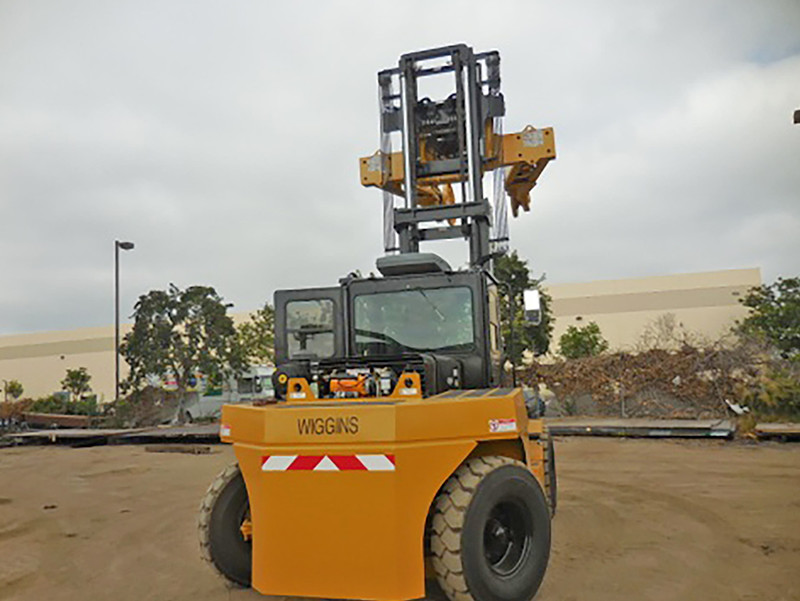
by Markus McDowell | Oct 24, 2016 | Marina, Material Handling, Our Team, Yard Trucks
Safety through innovative engineering & technology
Safety is a critical characteristic of any high capacity machine. Mishaps cost money, time, and, worst of all, can cause injury or even death. That’s why Wiggins forklifts have standard safety features and options that save money. With the lowest counter-weight in the industry, rear visibility is dramatically improved, which increases customer and employee safety while protecting property from damage.
But we don’t stop there. We use the latest cameras, sensors, and technology. Our Vision Plus™ safety system can differentiate people from objects and track them, warning the operator of possible safety hazards. The IQAN™ System with its adjustable monitor keeps the operator informed about engine performance and status. Ask about our optional certified Rollover Protection System, which complies with international safety standards.
Visibility, sensors, cameras, engineered monitoring systems, and overload warning systems help ensure that Wiggins Yard Bulls meets the highest possible safety standards.
News, updates, discounts, service and maintenance tips, and more.
by Markus McDowell | May 23, 2016 | Custom Engineering, Marina
When a marina owner or operator wants to buy a marina lift, the first question is usually “what capacity?” How big of a boat does it need to lift, and how high?
The answer to that question is not as simple as one might think. In our last post (“A Brief Note on the History of Marina Lifts and Capacity”), we discussed how the terminology for forklift “capacity” was not developed with boats in mind.
The First Problem
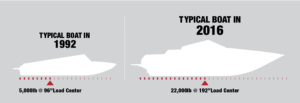 In brief, the 36” or 48” “load center” terminology was not coined for lifting boats. Boats are heavy in the stern, light in the bow , and longer and narrower that regular forklift loads. Manufacturers began to specific 96-inch load centers (eight feet), yet even as early as the 1990s, boats had 10’, 12’, and even 15’ load centers. Accidents happened because of the lack of an easy and precise terminology.
In brief, the 36” or 48” “load center” terminology was not coined for lifting boats. Boats are heavy in the stern, light in the bow , and longer and narrower that regular forklift loads. Manufacturers began to specific 96-inch load centers (eight feet), yet even as early as the 1990s, boats had 10’, 12’, and even 15’ load centers. Accidents happened because of the lack of an easy and precise terminology.
The problem was exacerbated when marinas began asking to lift 40- and even 50-foot boats. Some manufacturers began using 144” load centers (12 feet!), but this didn’t solve the problem.
Operators just want to move boats, and do it safely. Using a 96” and 144” load center capacity is not the easiest or most precise terminology.
The Second Problem
Because boats are so long, with unusual weight distributions, they place heavier stresses on the carriage, mast, and forks of a marina lift than regular forklift loads.
For example, 5,000 pounds at 36″ puts 50% more stress on the forks and carriage than 5,000 pounds at 24”. When we lift a 42’ boat heavy at the stern and a bow that extends well beyond the forks, the stresses on forks, carriages, and masts are far more than typical non-marina loads. Accidents happen because some manufacturers do not build beyond the capacity of a typical 96” or 144” load center, necessary for these added stresses. (Wiggins Marina Bull are built 30% to 50% stronger than other forklifts designed for 96” load centers for this very reason.)
So, 96” and 144” load centers:
- do not accurately reflect the load center of any boat
- give no indication of the strength of the carriage, mast, or forks to lift any particular boat
The Wiggins Solutions #1: Build to the Boat
Wiggins spent many decades thinking through all these issues. We constantly research, test, measure, and innovate. We engineer, design, and construct our lifts to the largest boat a customer needs to lift—not to a 96” or 144” load center. Easy for you, standard for us.
The Wiggins Solution #2: MIPs
We use two capacity terminologies: the common “load center” (because it is expected), and a more precise and easy measurement of capacity called MIPs.
In the real world, no one is lifting a boat that weighs 35,000 pounds with a 96” load center (they don’t exist!). A 35,000-pound boat might have a load center closer to 240” (20’). A better measurement of the forces a boat will place on a lift is “millions of inch-pounds” (MIPs). An “inch-pound” describes how much force is exerted by a boat on a forklift per square inch, and takes into account weight and torque when turning or braking. How do you figure MIPs?
Weight of boat (lbs) x load center (inches) = MIPs
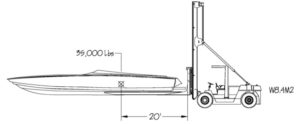 A 35,000 pound boat with a 20’ load center is 8.4 MIPs. Since Wiggins’ Marina Bull have MIPs in their model numbers, you know you will need a model W8.4 M2 or higher. (It would be listed as 52,000 lbs at 96” load center for continuity.)
A 35,000 pound boat with a 20’ load center is 8.4 MIPs. Since Wiggins’ Marina Bull have MIPs in their model numbers, you know you will need a model W8.4 M2 or higher. (It would be listed as 52,000 lbs at 96” load center for continuity.)
If you have a Marina Bull W8.4 M2, and a boat arrives at your marina that weighs 36,000 lbs with a load center at 216 inches, can you lift it? Multiply 36,000 by 216 to get 7.8 MIPs—then get out there and move that boat with complete confidence!
Lifting Boats in the Real World
Wiggins model numbers are based on boats, not an out-of-date 96” load center. Do you want to know if a competitor model compares to the Wiggins W 8.4 M2? They might tell you that you need their model 600 which has a capacity of 60,000 lbs at a 96” load center. Will it lift your boat? Maybe, but how do you know? First, there is no 60,000 lb boat over 50’ long with a load center at 8’! Second, did they design the carriage, mast, and forks for that much boat? In order to lift the same boat as a Wiggins M8.2, you might need a lift of larger capacity from our competitors, because many manufacturers use the same carriage, mast, and forks across a family of marina lifts.
Wiggins builds our Marina Bulls to lift the largest boat you need to lift, and provides an easy formula for safe lifting capacity. A measurement that ensures the safety of your lift, your facility, your employees, and your customer’s expensive boats.
We will delve into the details of load capacities, strength of components, and MIPs in future posts. Join our mailing list to keep up!
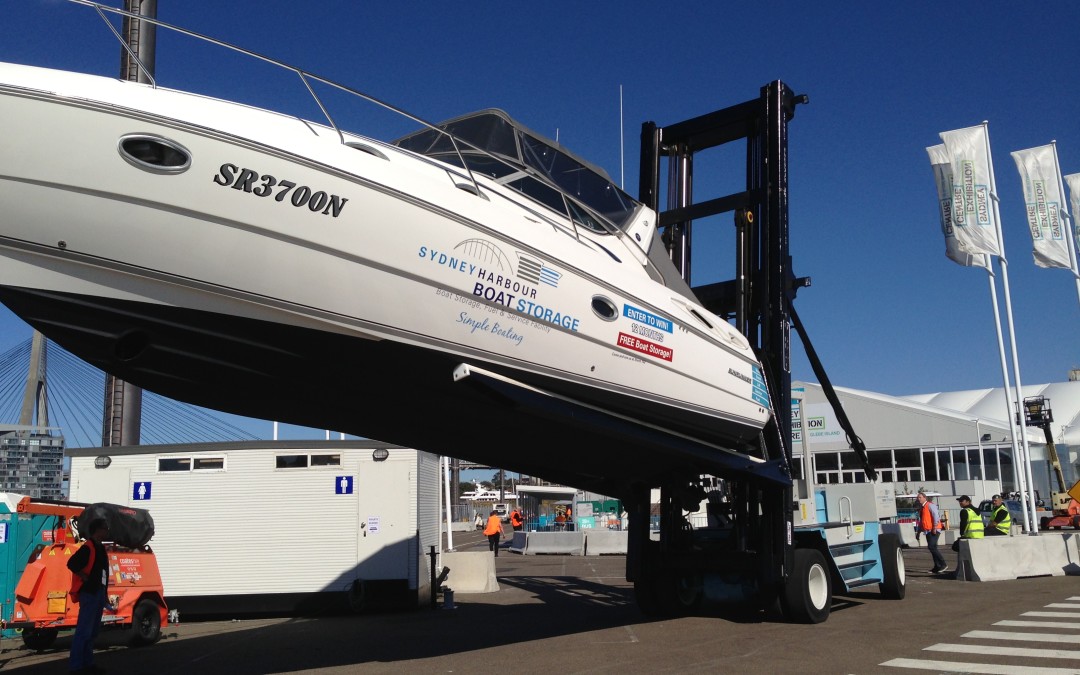
by Markus McDowell | May 2, 2016 | Marina
Why do Wiggins marina lifts have the reputation as the safest and most stable in the world?
Over the next few posts, we’ll take a brief look at the history of lift capacity and the differences between lifting a boat and lifting other loads.
From Lifting Pallets to Lifting Boats
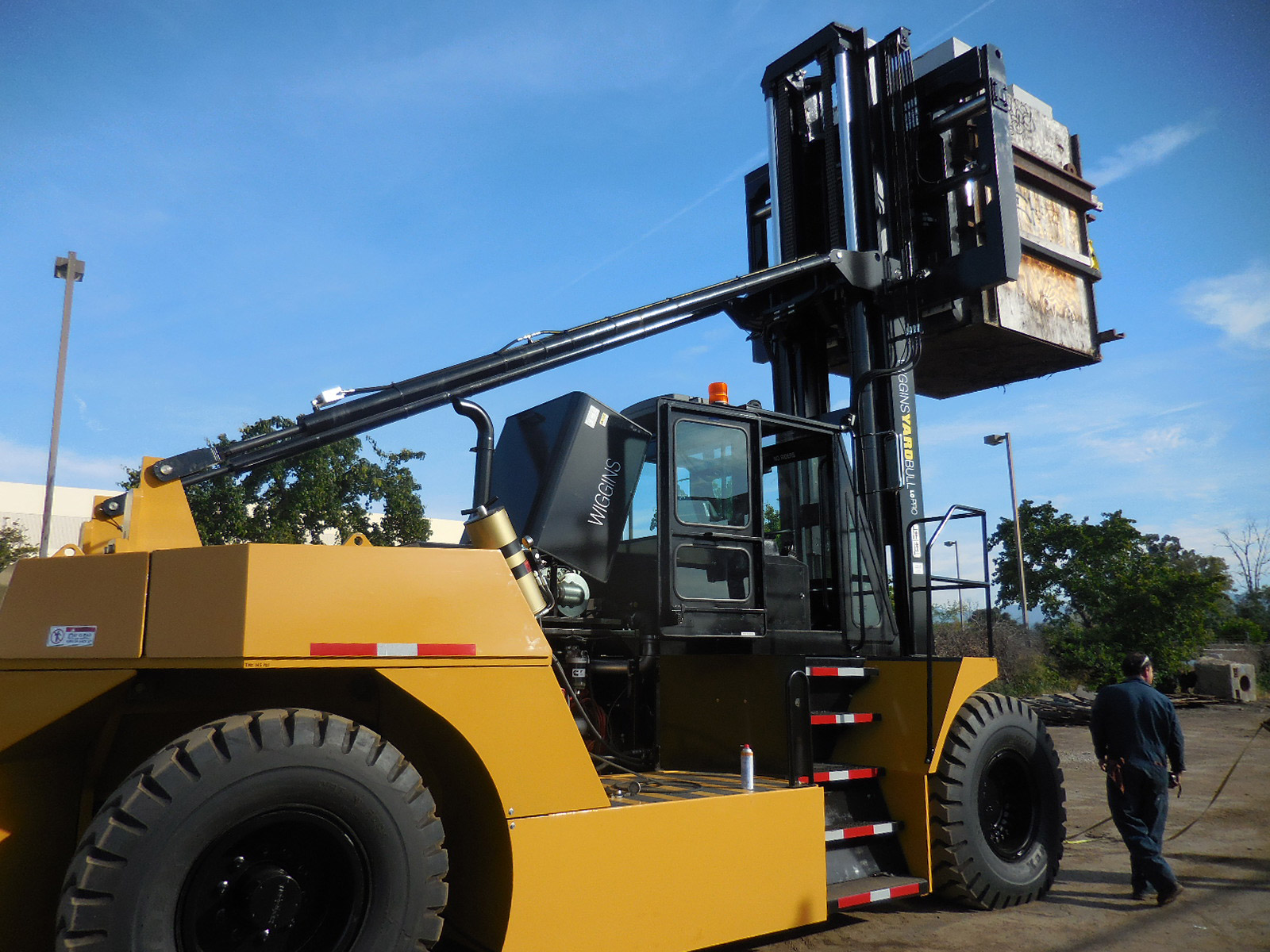 About 35-years ago, the first modern “marina forklifts” were built. Like today, they designed like regular forklifts, modified to pick up boats. Those “regular” lifts worked with loads that usually had a center of gravity near the physical center. That center of gravity is the “load center,” and became the standard way of discussing capacity.
About 35-years ago, the first modern “marina forklifts” were built. Like today, they designed like regular forklifts, modified to pick up boats. Those “regular” lifts worked with loads that usually had a center of gravity near the physical center. That center of gravity is the “load center,” and became the standard way of discussing capacity.
Imagine a pallet of bricks on a forklift, set back against the carriage. If the pallet is 48” x 48” and weights 5,000 lbs, then the load center 24” out from the carriage. So you need a forklift that can lift 5,000 lbs at 24” load center. (How high out can lift the pallet is another consideration—the higher you raise a load, the more capacity is needed. More on that later.)
Regular forklift capacities became standardized at 24” or 36” load centers. For larger loads, this was increased by building bigger lifts with heavier counterweights. Still, most loads had their load centers somewhere near the center, and were usually easy to calculate.
There are other factors to be considered. A forklift is not a teeter-totter (or see-saw) which simply lifts a load up and then puts it down. It accelerates, moves, brakes, turns, and goes up and down slopes. This all affects the center of gravity. If you want a forklift to be stable, it has to be built beyond the stated capacity. Specifications are one thing—stable and safe operation in the field is another.
Wiggins Lift has always designed and manufactured our lifts far beyond our competitors’ ratings. Safety and performance in the field are a matter of pride for us. A non-Wiggins lift may be cheaper, but it will not be safer or perform as well.
Designing to Lift Boats
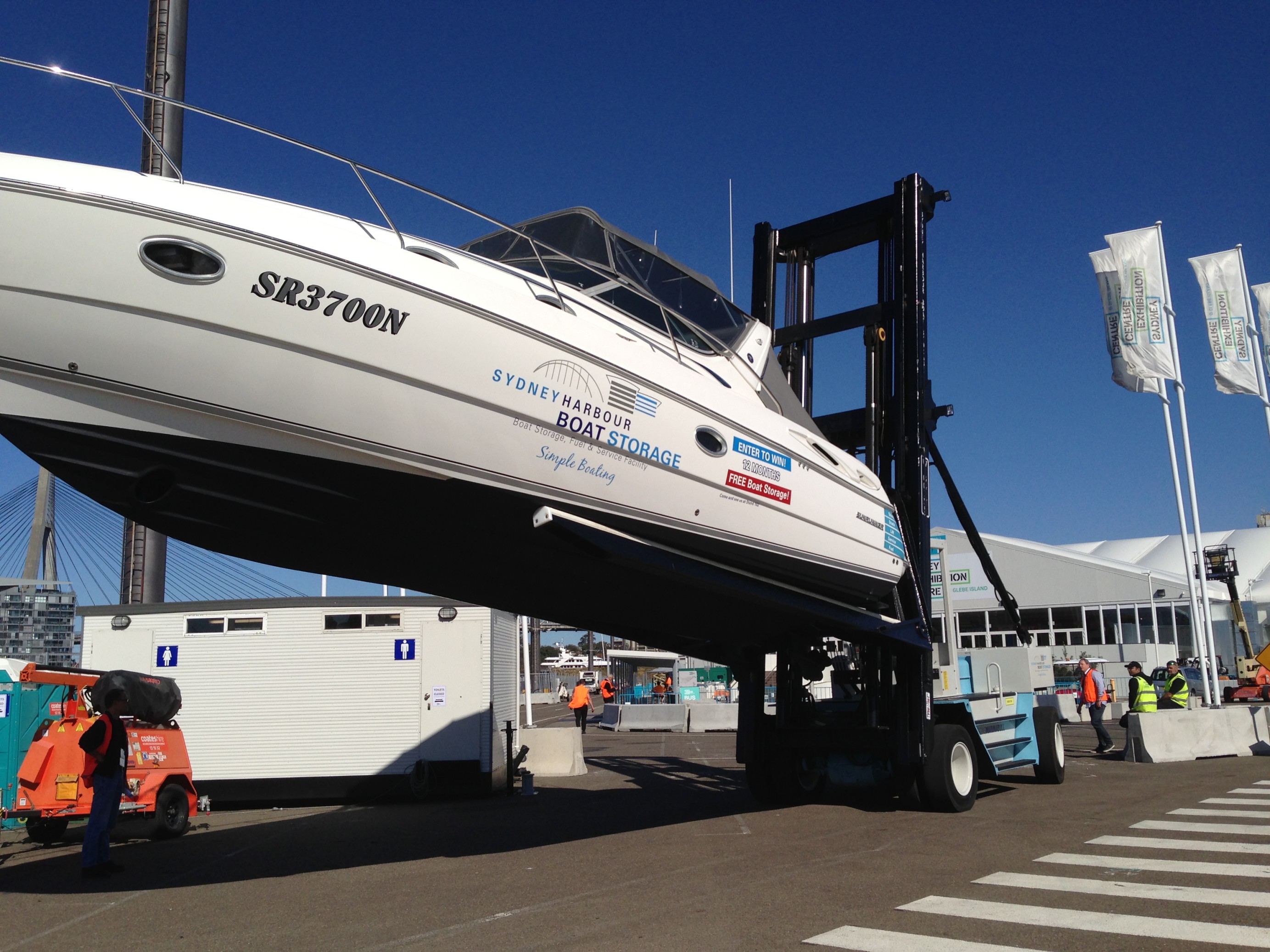 When the first marina lifts were manufactured, the same capacity terminology was used. But boats are quite different from other loads. Their centers of gravity are often not anywhere near the center of the boat. They are far longer than most normal loads. Every boat is different, not only in OEM options, but owner additions (larger tanks, generators, appliances, etc.) Boat manufacturer are concerned about displacement, overall-length, beam, and so on. The center of gravity of a boat is not as important to them as to us, and not always easy to calculate for marina lift operations.
When the first marina lifts were manufactured, the same capacity terminology was used. But boats are quite different from other loads. Their centers of gravity are often not anywhere near the center of the boat. They are far longer than most normal loads. Every boat is different, not only in OEM options, but owner additions (larger tanks, generators, appliances, etc.) Boat manufacturer are concerned about displacement, overall-length, beam, and so on. The center of gravity of a boat is not as important to them as to us, and not always easy to calculate for marina lift operations.
Early manufacturers found that to design a forklift for a 20’ boat, the forklift had to be rated 96” load centers! Moreover, longer boats placed more stress on the lift through additional leverage, resulting in bent forks, broken mast bearings, and other damage. Not only did the capacity at load center need to be moved out, but the lifting mechanisms needed to be beefed up. Wiggins Lift has always been at the forefront of these developments, and that why we have the reputation for the toughest and safest marina lifts in the world.
As marinas needed to move larger and larger boats, the forklift capacities had to increase: 6,000 lbs at 96” load center, then 8,000 lbs, 10,000 lbs, and even 12,000 lbs.
You might be thinking that a 96” load center doesn’t make a lot of sense with boats beyond 20 feet long. And you would be right. If a marina owner want to lift 25,000-pound boats which are 35’ to 45’ long, along with a strong enough mast and carriage, the capacity would need to be 25,000 lbs at a 96” load center. That’s an 8’ load center, which makes little sense for a 40’ boat. (We are not aware of any 20’ boats that weigh 25,000 lbs!).
Another Way of Determining Capacity
Still, these are the terms we are stuck with after such long usage. However, Wiggins has used an additional capacity measurement, specifically designed for boats, for about ten years. Along with the standard capacity rating of 96”, this rating gives you a leverage rating and gives you a more accurate measurement to determine what lift you need for your marina, and what boat you can safely transport.
We’ll discuss this capacity measurement in our next post.
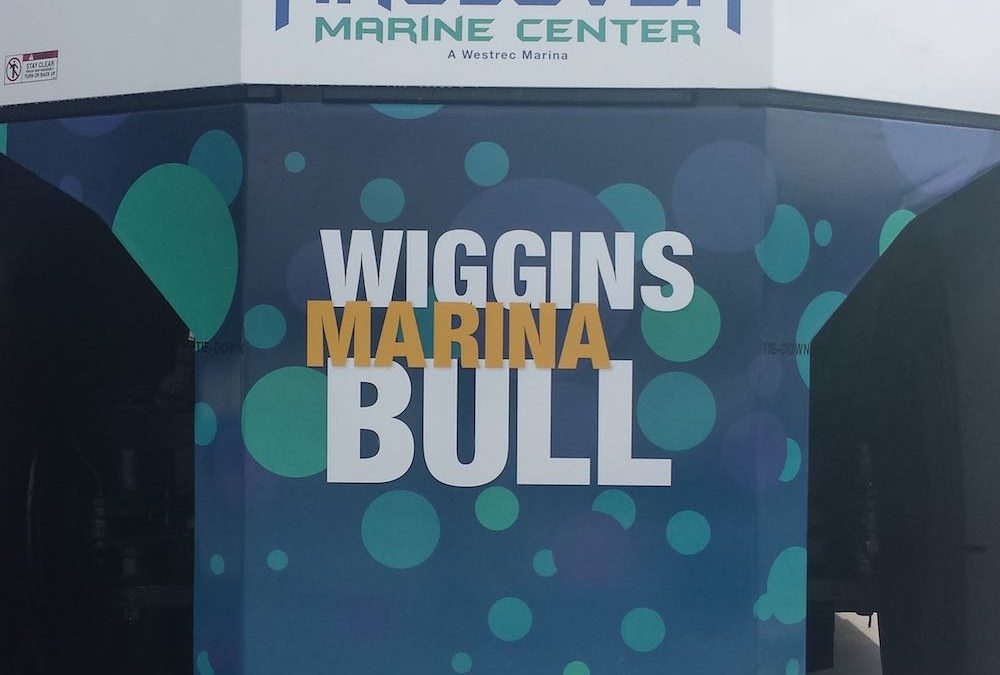
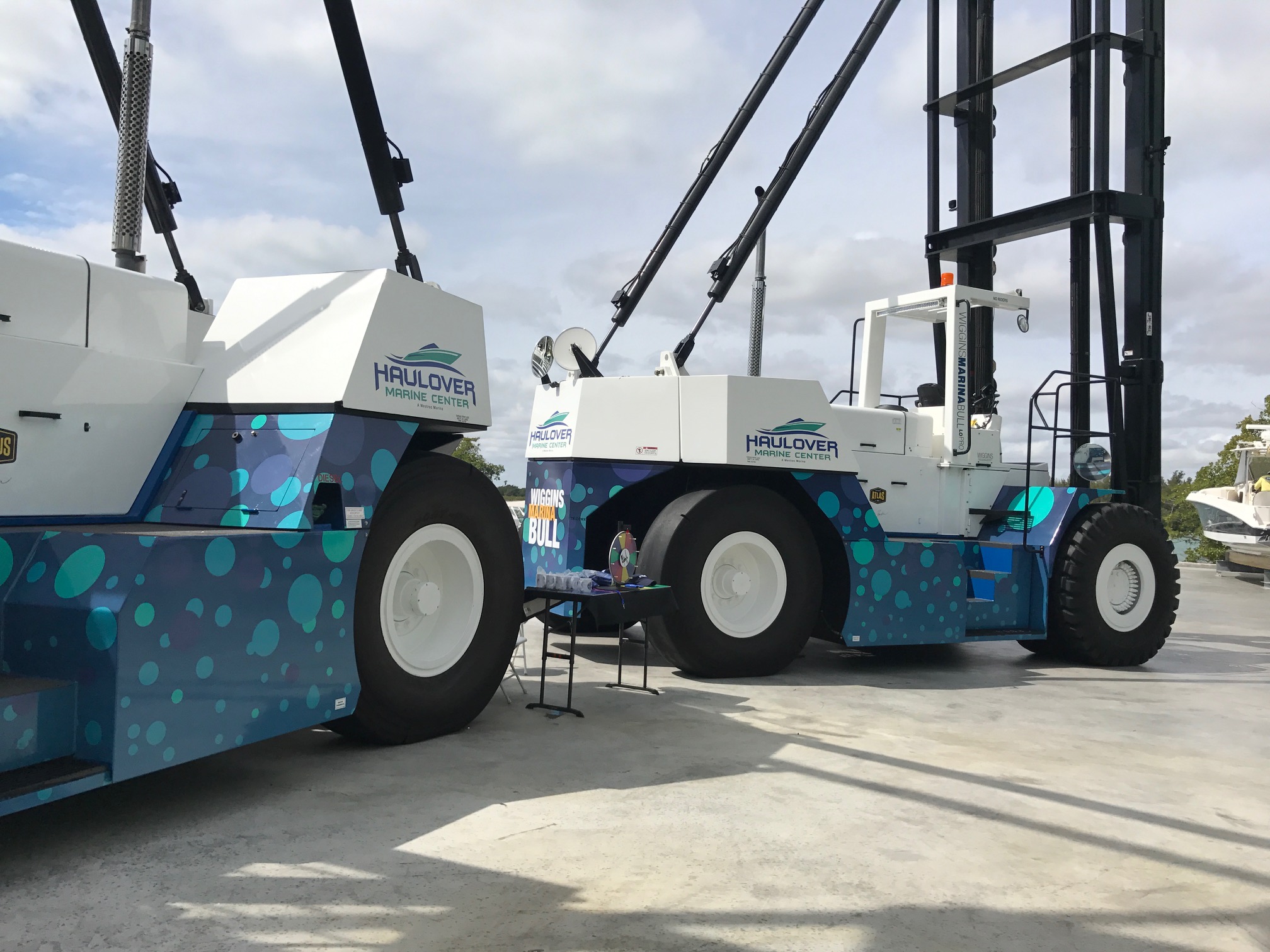
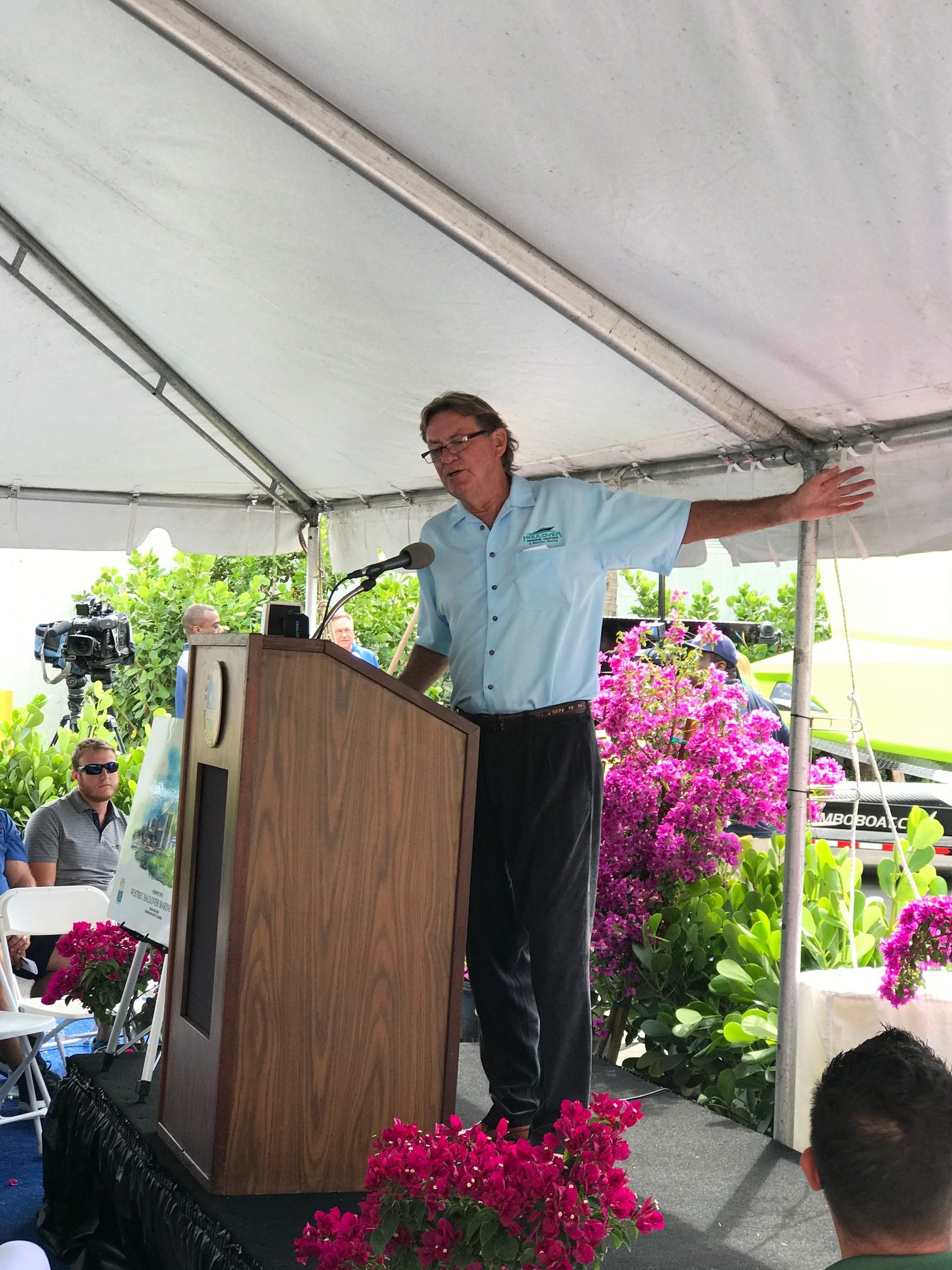
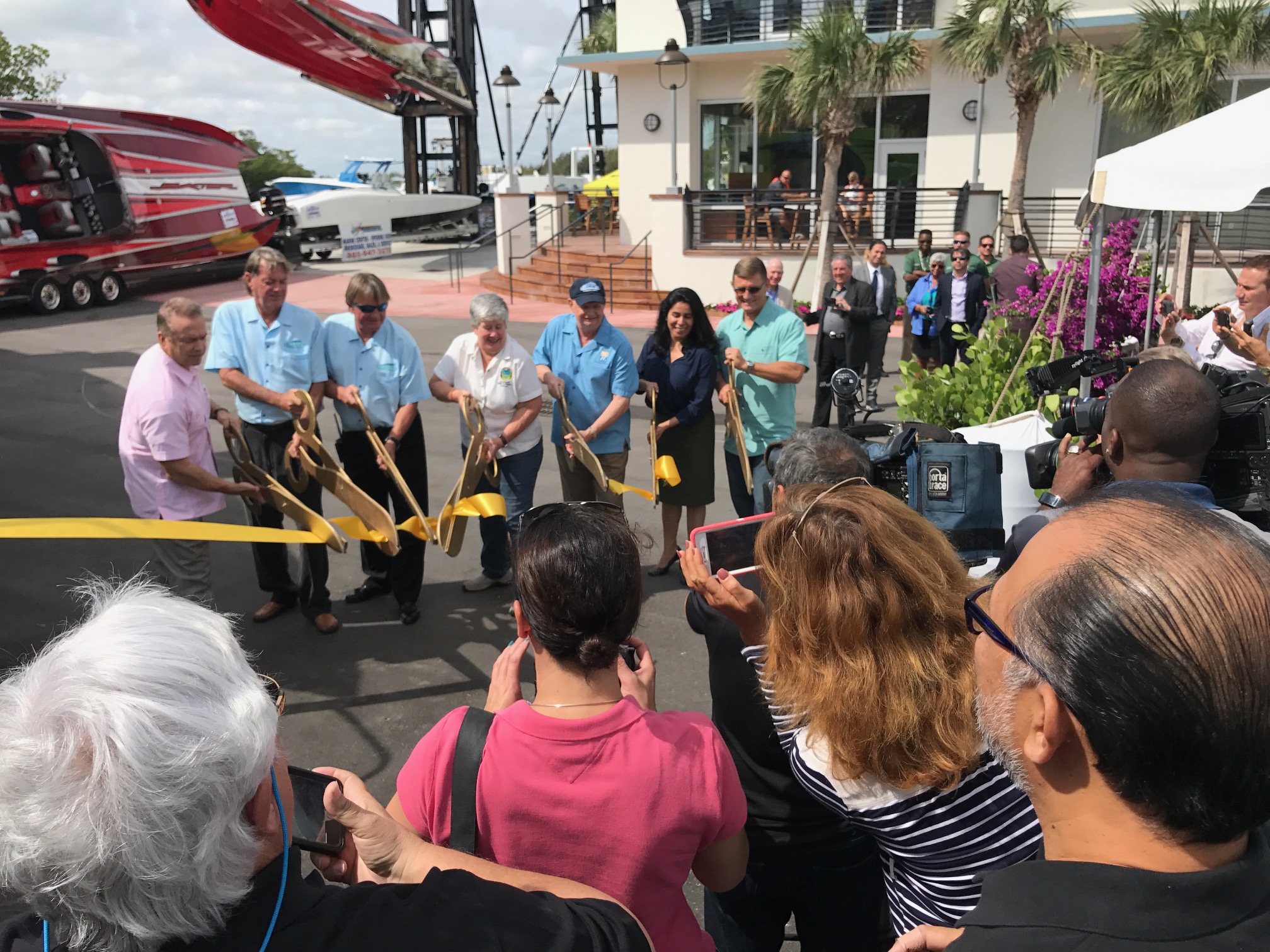
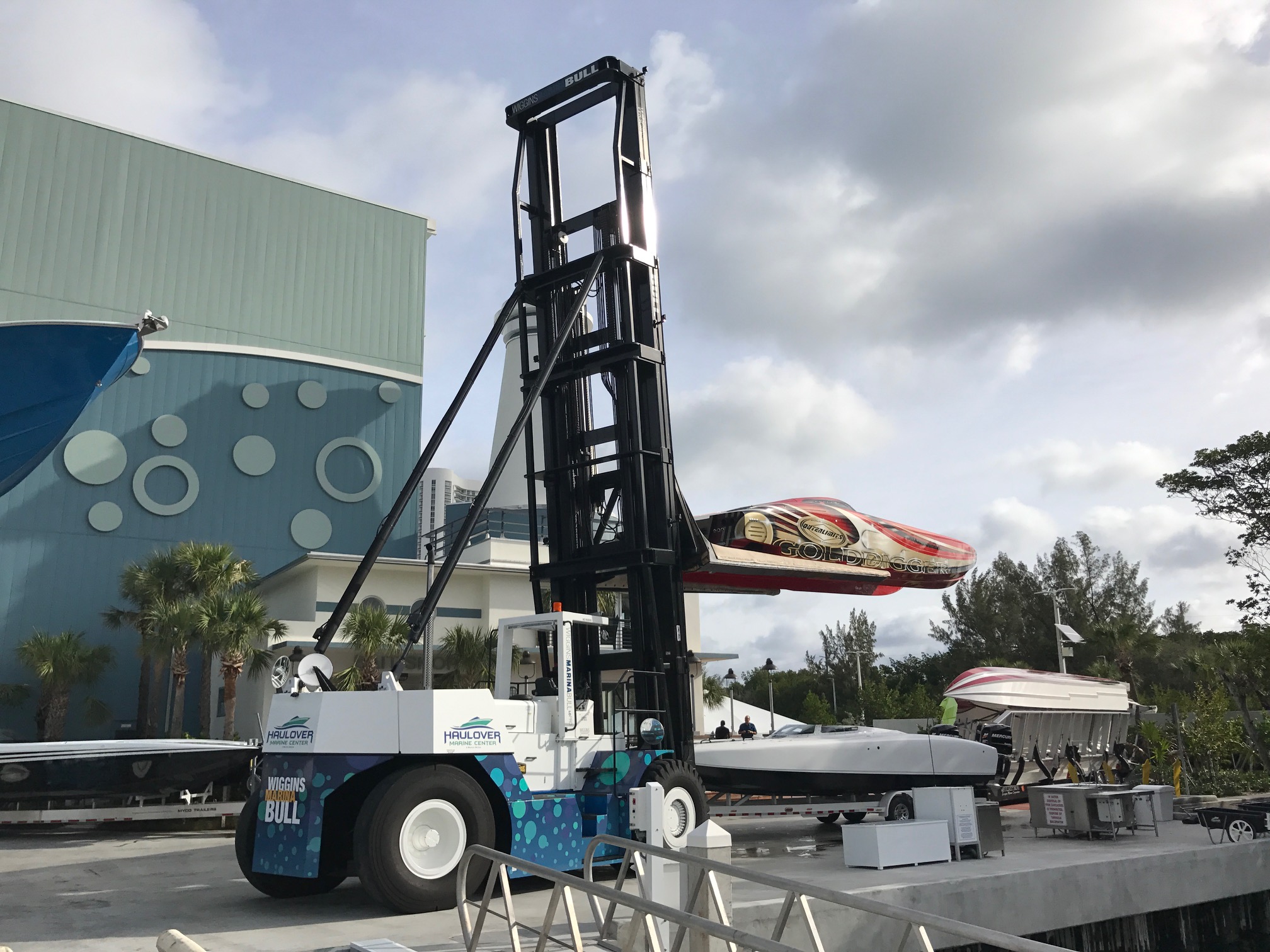
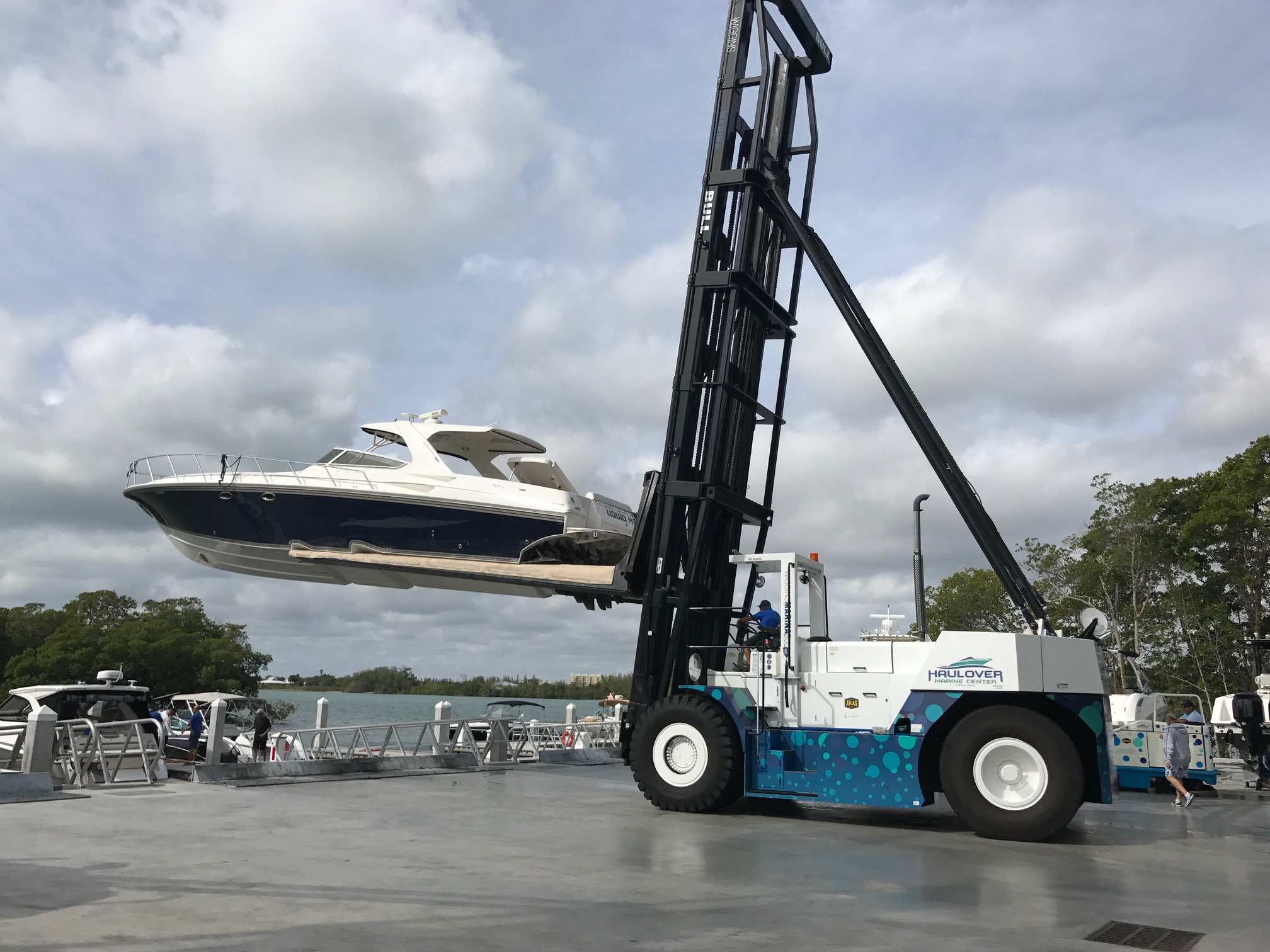
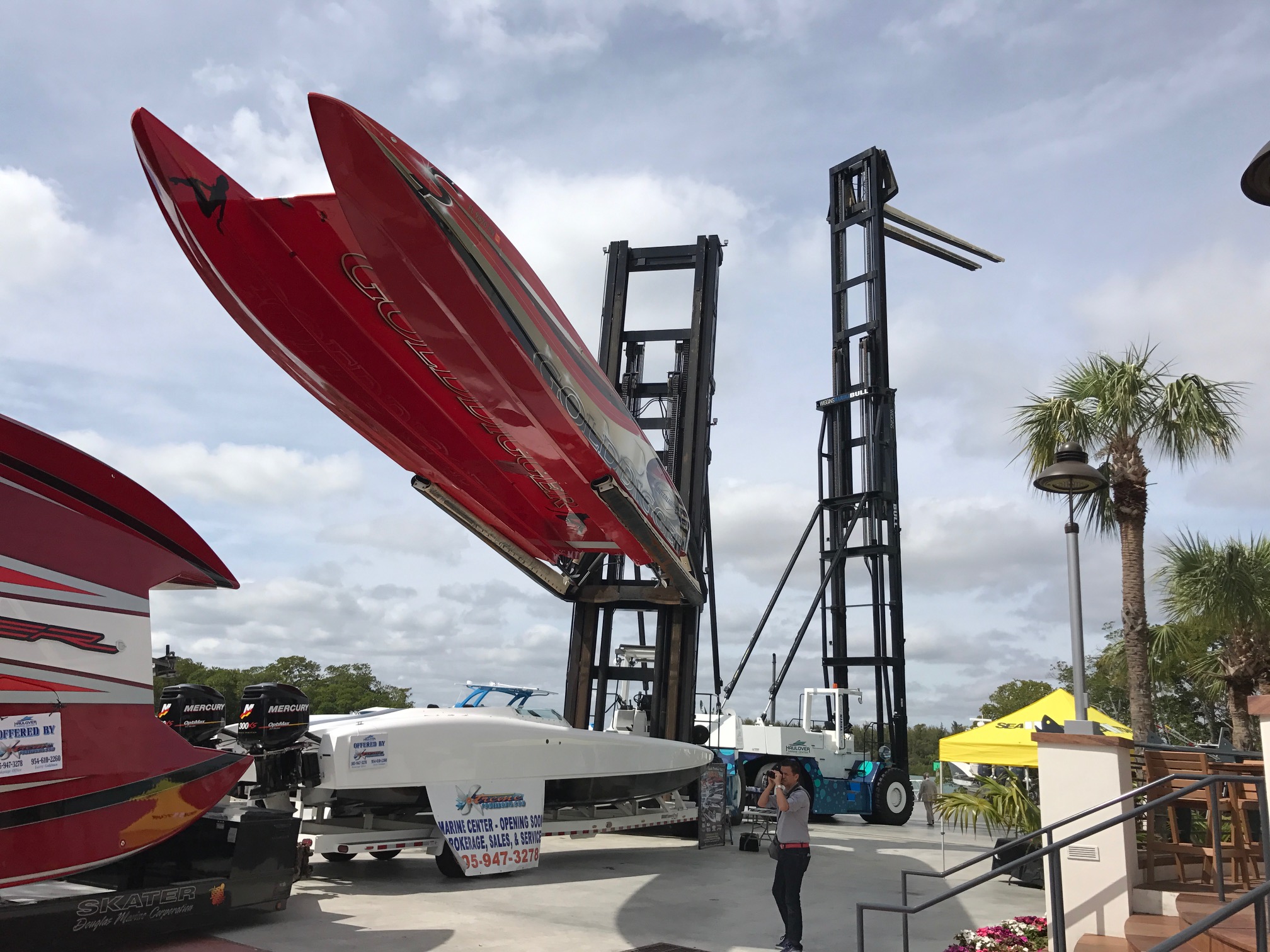
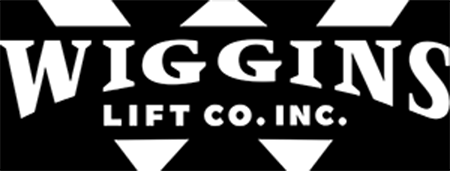
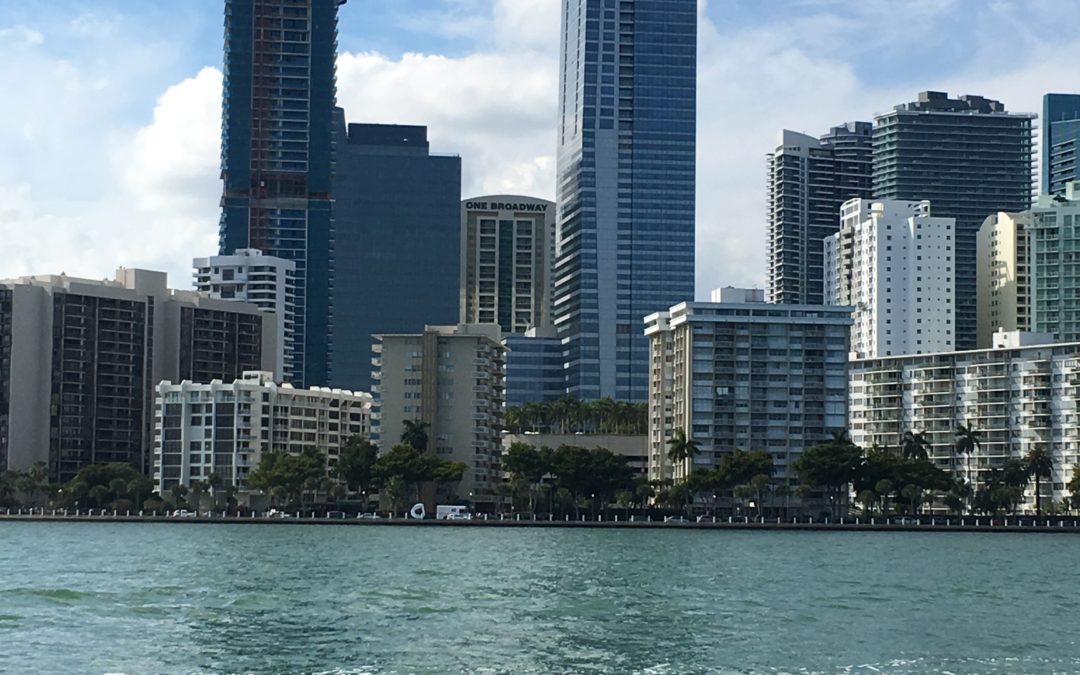
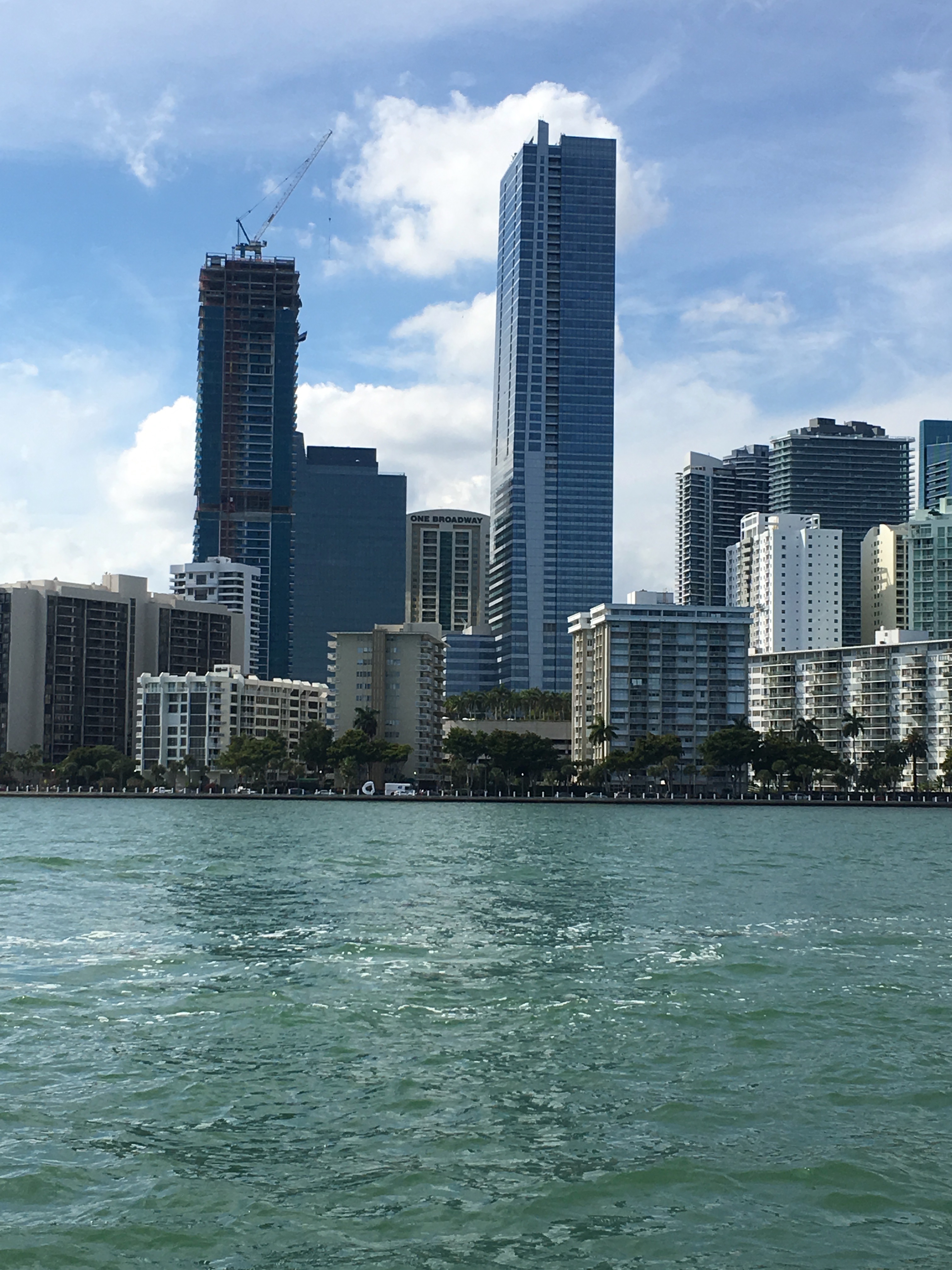
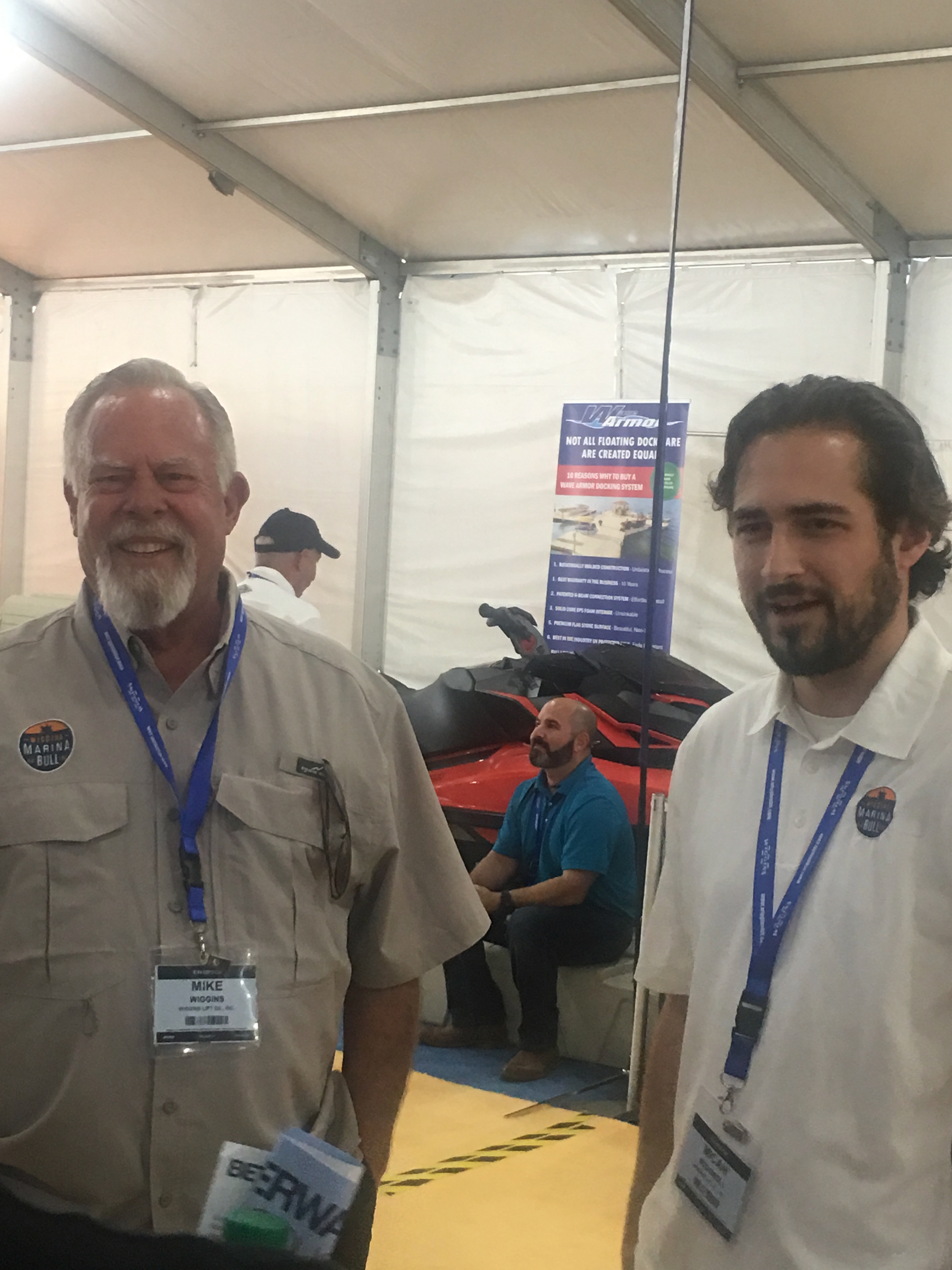
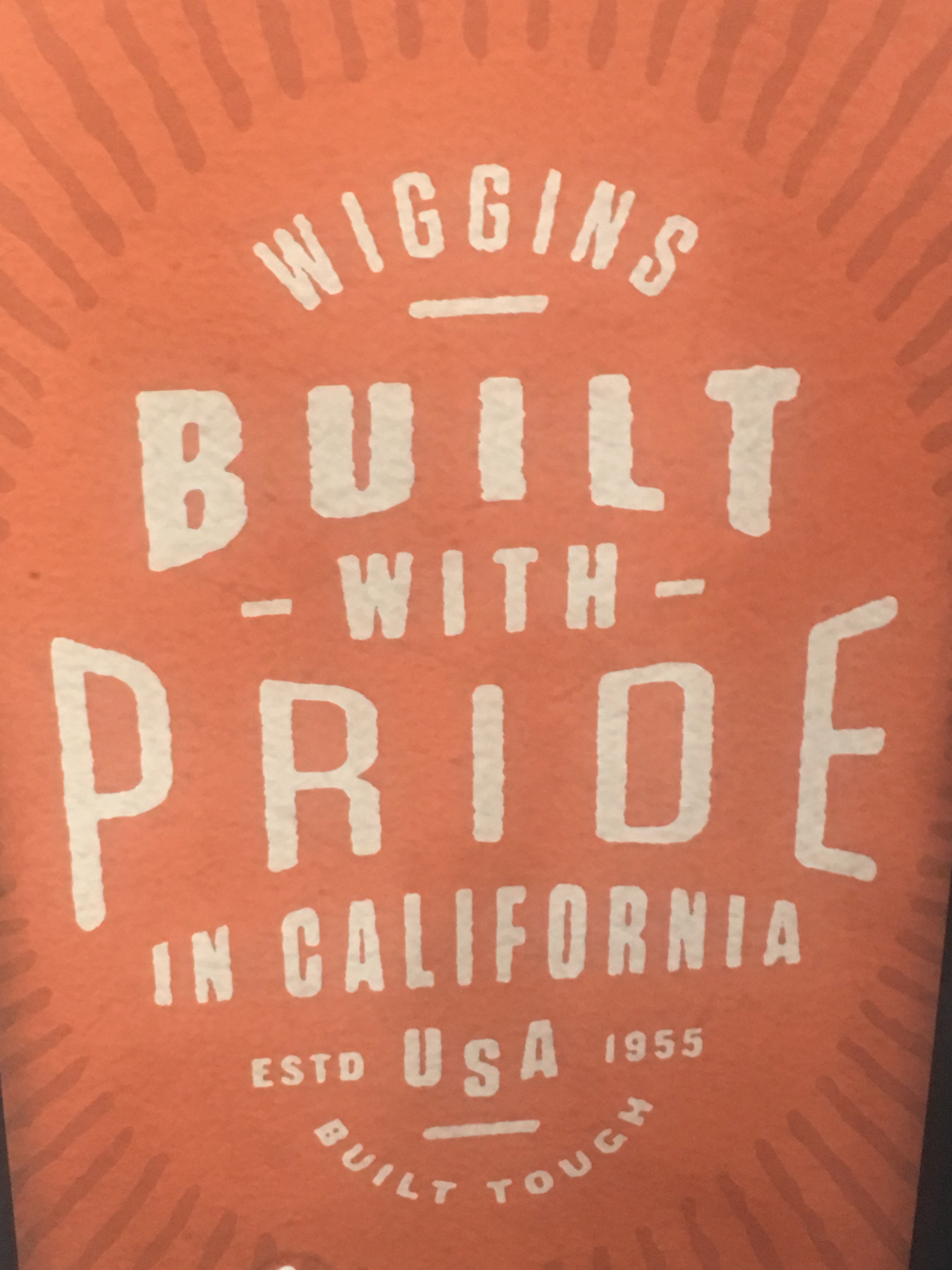
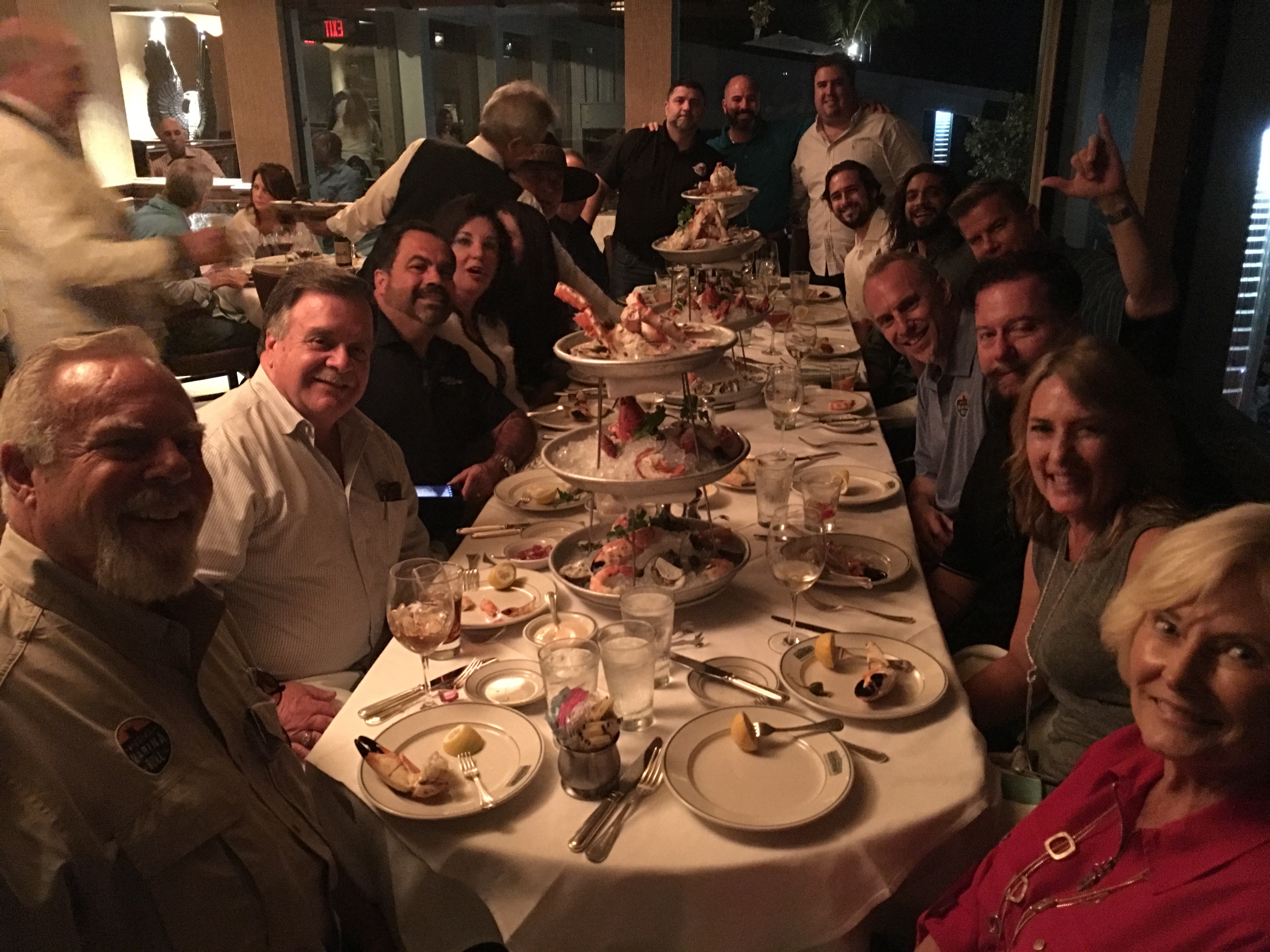
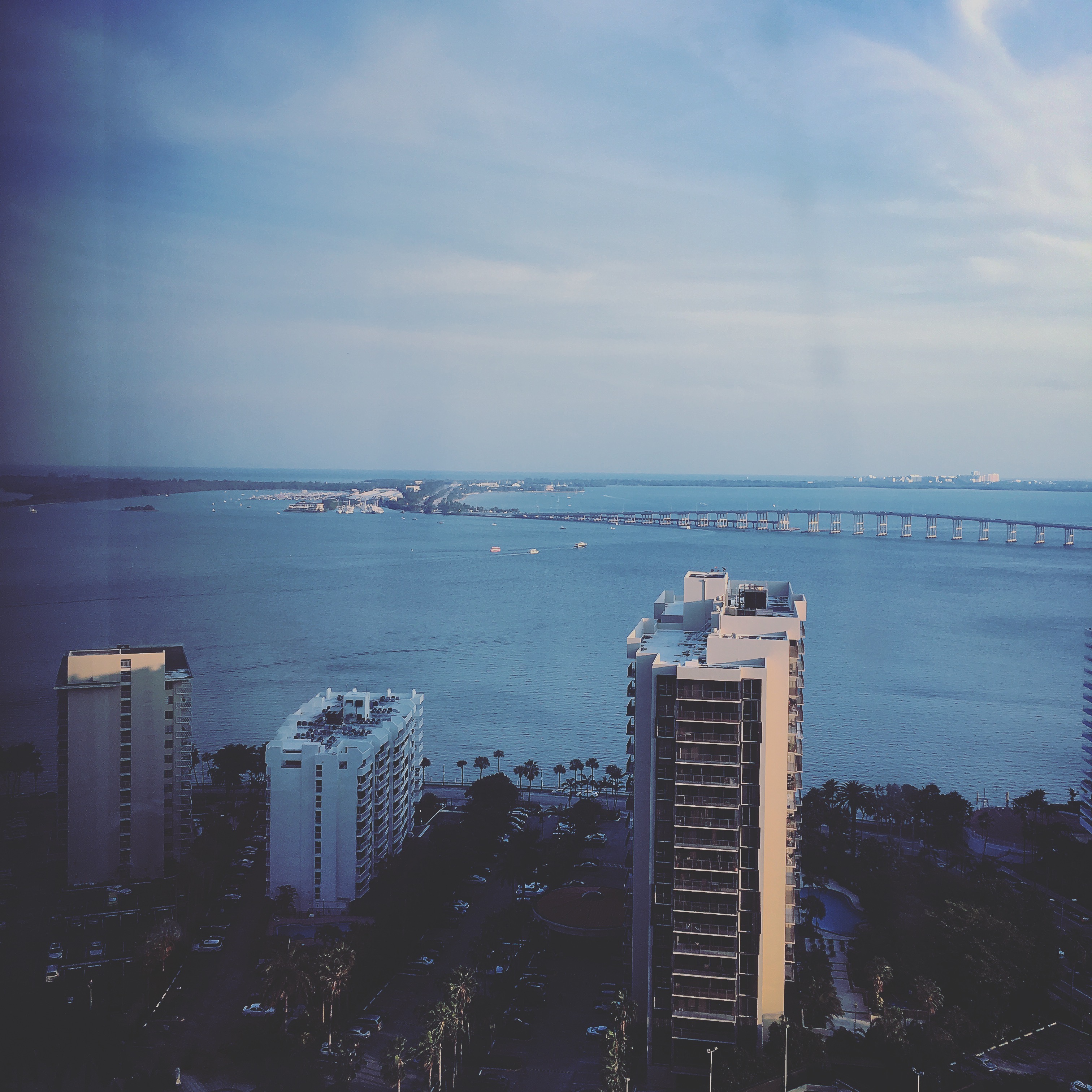
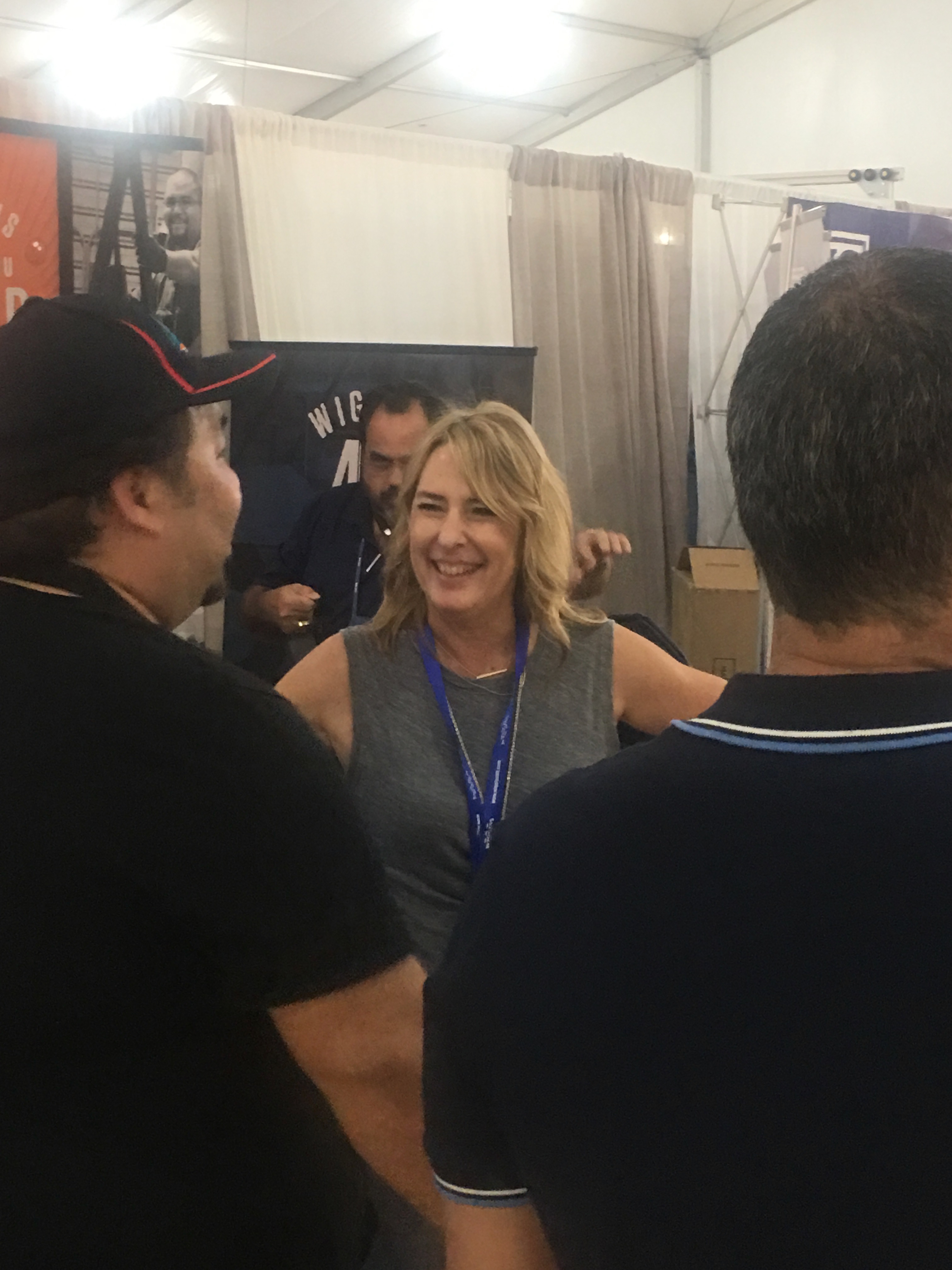
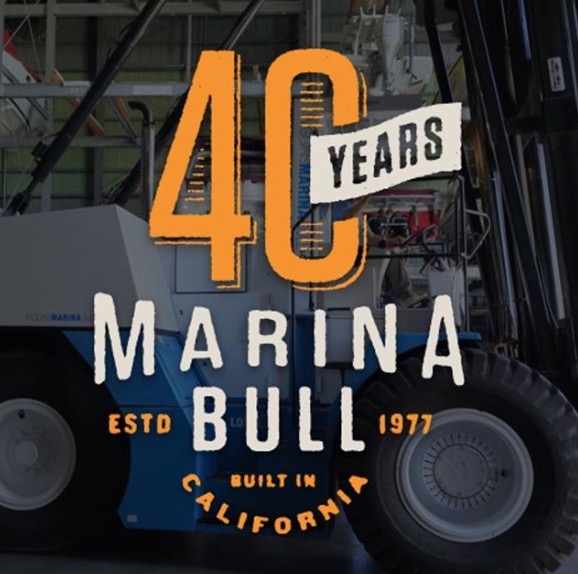
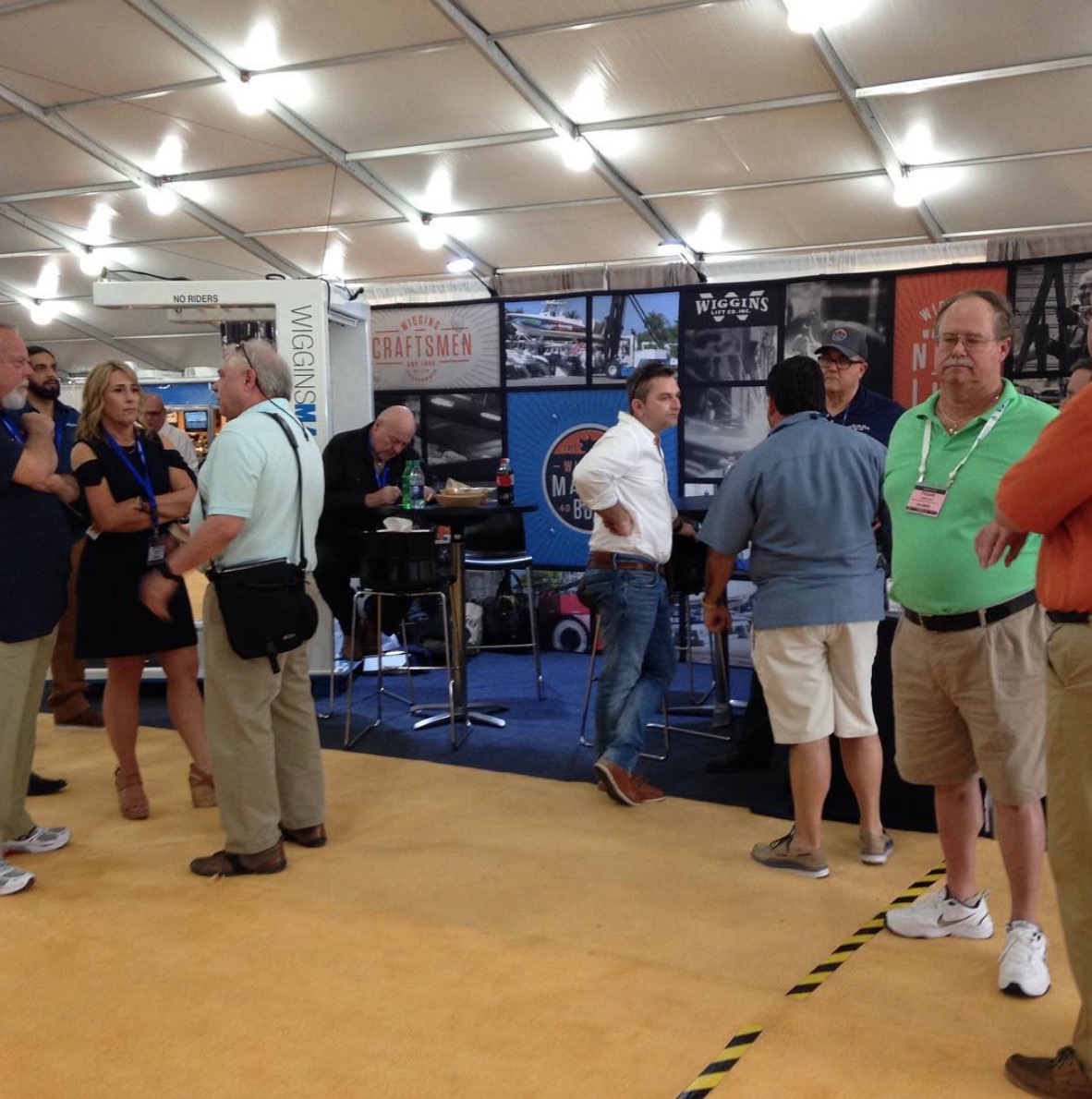
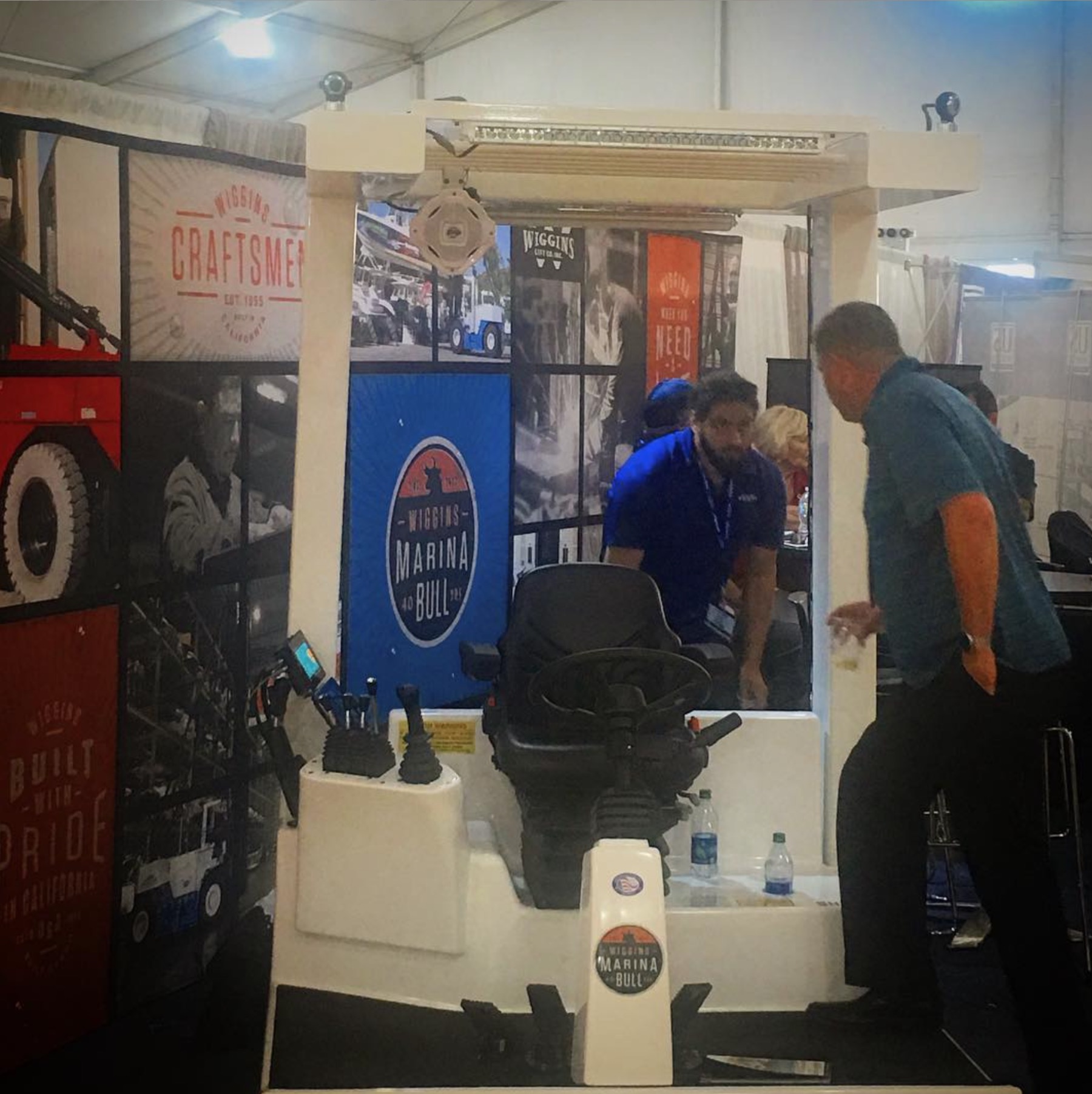

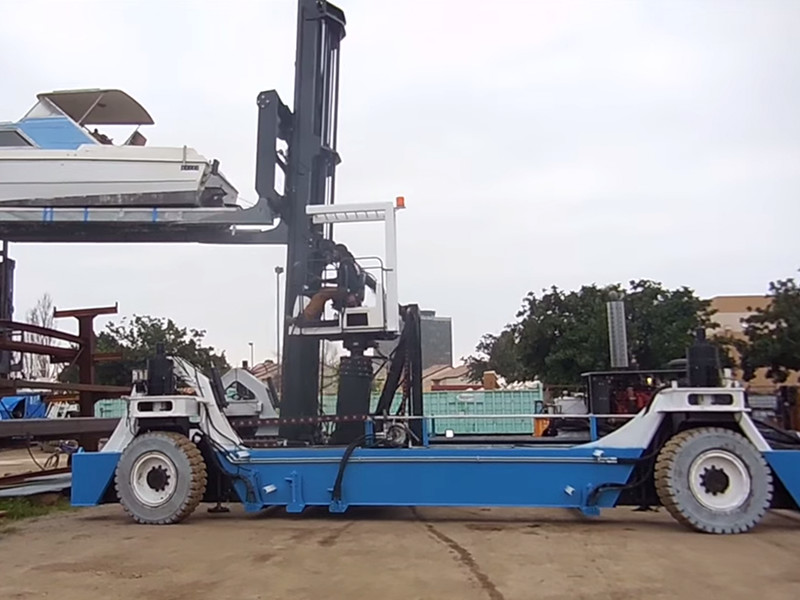

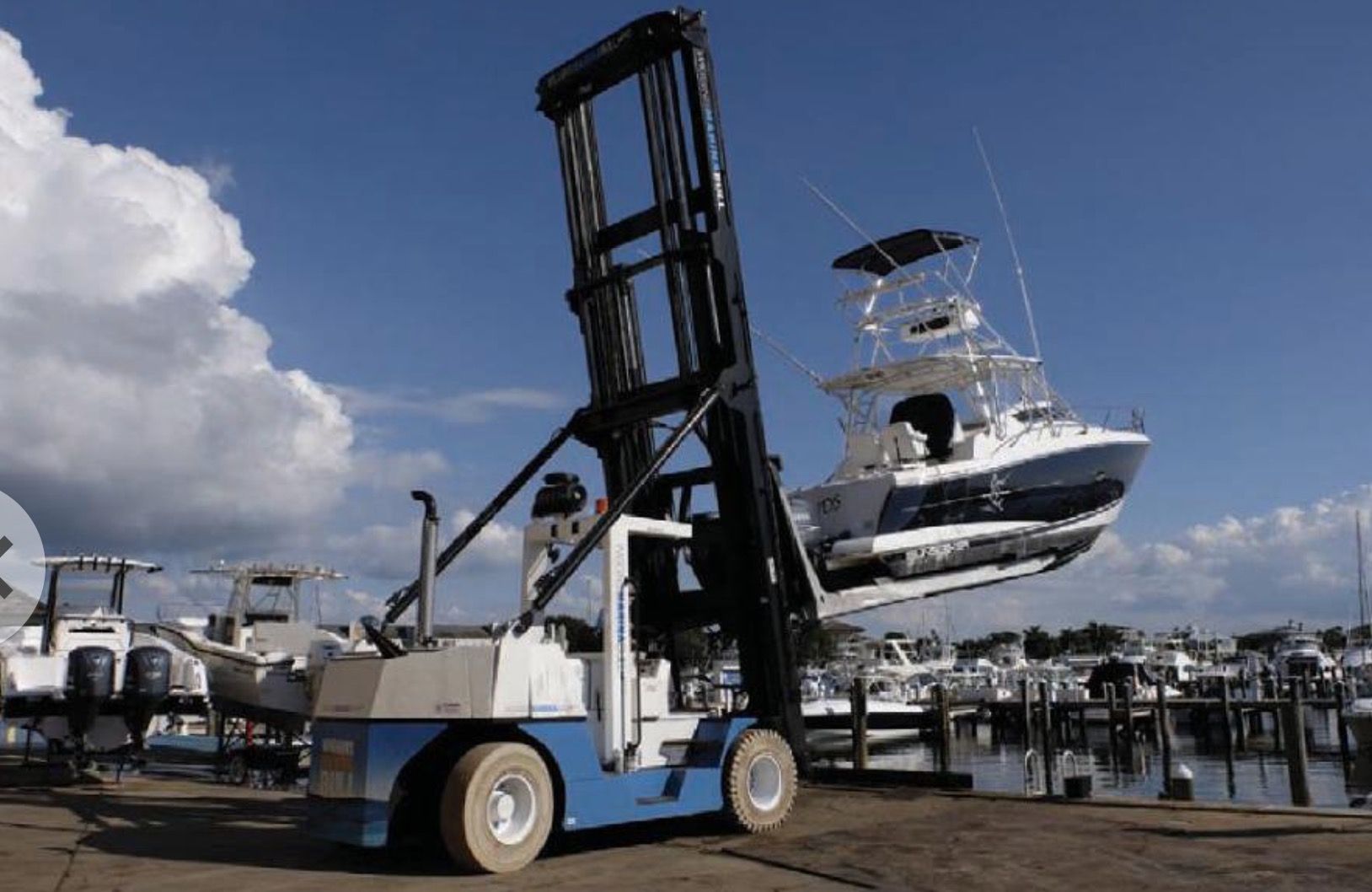

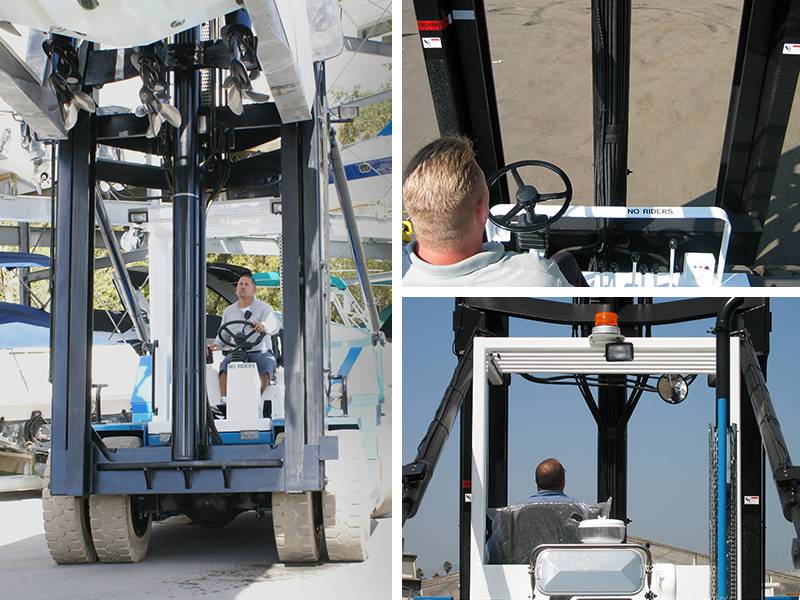
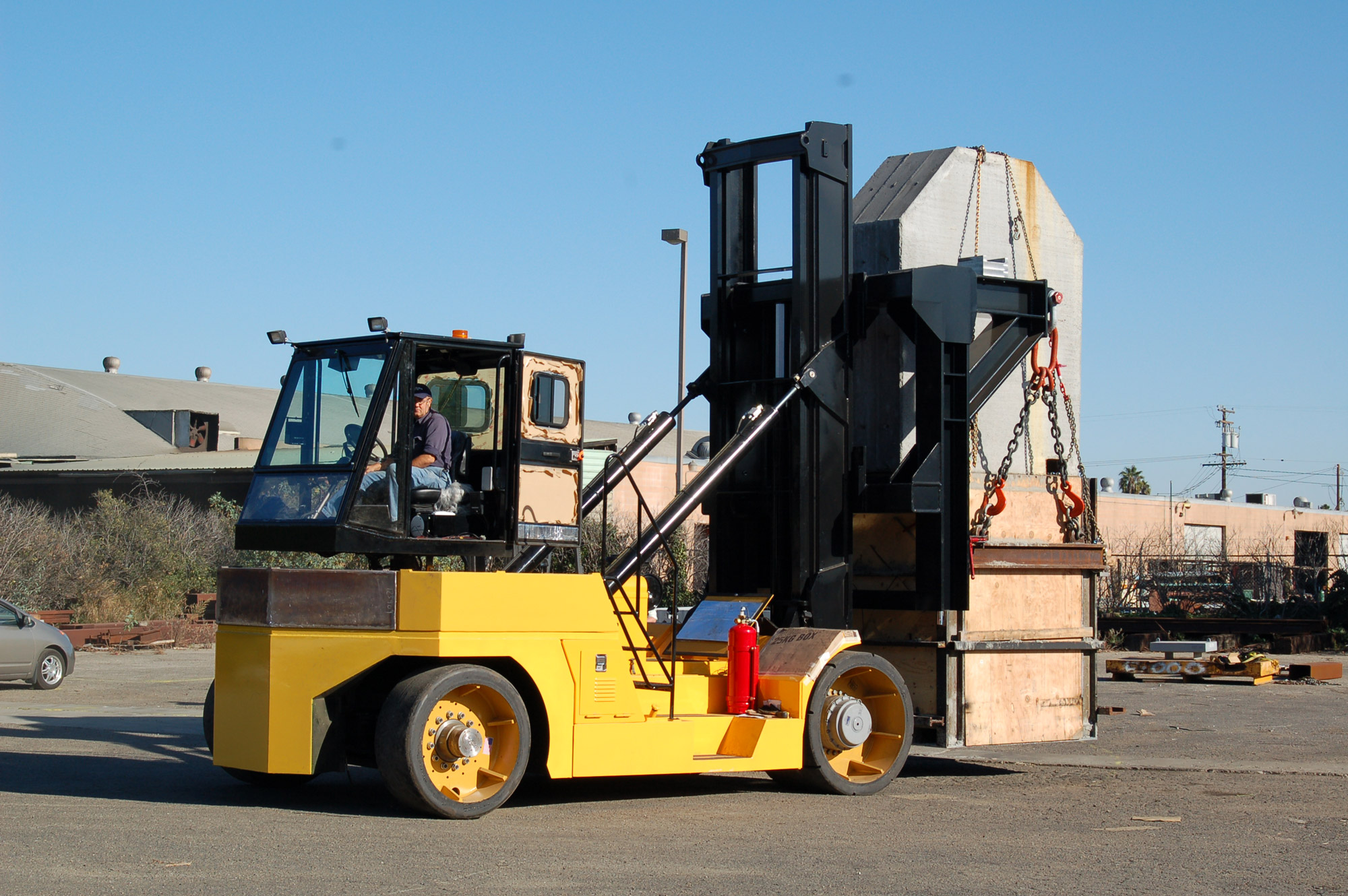
 In brief, the 36” or 48” “load center” terminology was not coined for lifting boats. Boats are heavy in the stern, light in the bow , and longer and narrower that regular forklift loads. Manufacturers began to specific 96-inch load centers (eight feet), yet even as early as the 1990s, boats had 10’, 12’, and even 15’ load centers. Accidents happened because of the lack of an easy and precise terminology.
In brief, the 36” or 48” “load center” terminology was not coined for lifting boats. Boats are heavy in the stern, light in the bow , and longer and narrower that regular forklift loads. Manufacturers began to specific 96-inch load centers (eight feet), yet even as early as the 1990s, boats had 10’, 12’, and even 15’ load centers. Accidents happened because of the lack of an easy and precise terminology. A 35,000 pound boat with a 20’ load center is 8.4 MIPs. Since Wiggins’ Marina Bull have MIPs in their model numbers, you know you will need a model W8.4 M2 or higher. (It would be listed as 52,000 lbs at 96” load center for continuity.)
A 35,000 pound boat with a 20’ load center is 8.4 MIPs. Since Wiggins’ Marina Bull have MIPs in their model numbers, you know you will need a model W8.4 M2 or higher. (It would be listed as 52,000 lbs at 96” load center for continuity.)
 About 35-years ago, the first modern “marina forklifts” were built. Like today, they designed like regular forklifts, modified to pick up boats. Those “regular” lifts worked with loads that usually had a center of gravity near the physical center. That center of gravity is the “load center,” and became the standard way of discussing capacity.
About 35-years ago, the first modern “marina forklifts” were built. Like today, they designed like regular forklifts, modified to pick up boats. Those “regular” lifts worked with loads that usually had a center of gravity near the physical center. That center of gravity is the “load center,” and became the standard way of discussing capacity. When the first marina lifts were manufactured, the same capacity terminology was used. But boats are quite different from other loads. Their centers of gravity are often not anywhere near the center of the boat. They are far longer than most normal loads. Every boat is different, not only in OEM options, but owner additions (larger tanks, generators, appliances, etc.) Boat manufacturer are concerned about displacement, overall-length, beam, and so on. The center of gravity of a boat is not as important to them as to us, and not always easy to calculate for marina lift operations.
When the first marina lifts were manufactured, the same capacity terminology was used. But boats are quite different from other loads. Their centers of gravity are often not anywhere near the center of the boat. They are far longer than most normal loads. Every boat is different, not only in OEM options, but owner additions (larger tanks, generators, appliances, etc.) Boat manufacturer are concerned about displacement, overall-length, beam, and so on. The center of gravity of a boat is not as important to them as to us, and not always easy to calculate for marina lift operations.